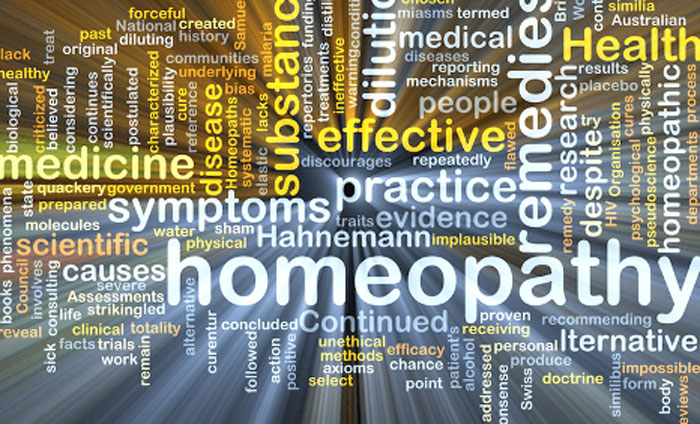
Homeopathy is a medical art and science of healing the sick by using ultra-diluted doses of nontoxic natural medicines—remedies—to stimulate the body’s innate healing capacity, commonly known as the immune system. Once the healing energy is stimulated, rapid, gentle, and permanent health can be achieved.
A classical homeopath determines each patient’s mental, emotional, and physical natures. This means classical homeopaths prescribe exactly for the individual’s needs, rather than for the diagnosis.
The modality of homeopathy has been practiced worldwide for more than two centuries in Europe, India, and in Central and South America. It was introduced to the United States in 1825 and used widely used in North America for a century. The science experienced a revival in the 1970s, in large part because of the educational endeavors and writings of George Vithoulkas.
What Is Classical Homeopathy?
Classical homeopathy is the system of medicine developed by the German-born physician Samuel Hahnemann (1755–1843). It uses one homeopathic remedy at a time to treat acute or chronic conditions.
What Can Homeopathy Treat?
People are often drawn to homeopathy because they have a condition that doesn’t adequately respond to traditional medical treatment (allopathic medicine). Homeopathy is considered a complementary and alternative medicine.
Adult complaints treatable with homeopathy include depression, anxiety, phobias, insomnia, allergies, auto-immune conditions, digestive problems, urinary tract infections, women’s hormonal and menstrual irregularities, infertility, cystitis, and skin conditions. Some homeopaths are treating neurologic conditions—including multiple sclerosis, seizure disorder, and Parkinson’s disease—and others are successful in treating some forms of cancer, and auto-immune conditions including diabetes, rheumatoid arthritis, and Crohn’s disease.
Pediatric conditions that can be treated with homeopathy include neurodevelopmental disorders, such as ADD, ADHD, PDD, autism spectrum, and certain types of developmental delay. Other common pediatric issues that can benefit from homeopathy treatment include behavioral problems, insomnia, allergies (food, seasonal pollen, and/or mold), earaches, colds and coughs, asthma, digestive and gastric problems, bed-wetting, and skin conditions.
What Is a Remedy?
A homeopathic remedy is a medicine that is capable of causing the same symptoms, syndromes, and conditions when administered to healthy people. This demonstrates the well-known homeopathic principal known as similia similibus curantur (“like is cured by like”). Remedies are derived from plants, animals, and minerals.
Remedies are first tested on healthy volunteers. The effects of the substance being tested create a “drug picture,” a process known as homeopathic proving. It often takes numerous provings to get an accurate and clear picture of a remedy.
Once the remedy’s known effect mimics the symptoms, syndromes, and/or conditions that it is administered to treat, it is manufactured according to the specifications of the Homeopathic Pharmacopoeia of the United States (HPUS). Official homeopathic medicines are those that have been monographed and accepted for inclusion in the HPUS. The manufacture of homeopathic medicine is regulated and approved by the FDA.
How To Take a Homeopathic Remedy
Homeopathic medicines are available in various forms: pellets (very small pills), tablets, liquids, creams, and gels. Patients should avoid eating or drinking for at least 15 minutes before and after taking a remedy by mouth.
For infants, pellets are best mixed 4 ounces of distilled water. Using a dropper or teaspoon, place a few drops of the mixed solution in the child’s mouth. Older children usually enjoy the sweet taste of the pellets and tablets, so they are simple to administer directly on or under the tongue.
Sometimes homeopaths will recommend that you dissolve the medicine in water. To do this, thoroughly wash a small drinking glass or glass dropper bottle and allow it to air dry. Set it on a steady surface, and fill it three-quarters full with distilled water. Open the remedy’s container (often a vial or small plastic tube), and without touching the pellets, lightly tap it to release six to eight pellets into the water. Let the water solution rest for 20 minutes. Stir it thoroughly with a clean, dry spoon (or shake, if you are using a glass dropper bottle), and take 1 teaspoon from this amount.
How To Store Homeopathic Medicines
Homeopathic medicines and products can lose their efficacy under certain conditions. Store them in a cool, dark place: away from sunlight and extreme temperatures, and away from strong-smelling substances, such as perfumes, eucalyptus, camphor, menthol (Bengay ointment and Vicks VapoRub are two often-used, over-the-counter medicines that contain menthol), and tea tree oil.
What Can Cause a Homeopathic Medicine To Be Ineffective?
Possible antidotes to homeopathic medicine include recreational drugs, caffeinated coffee, corticosteroids, antibiotics, vaccinations, severe mental and emotional stresses, and certain anesthesias used for dental treatment.